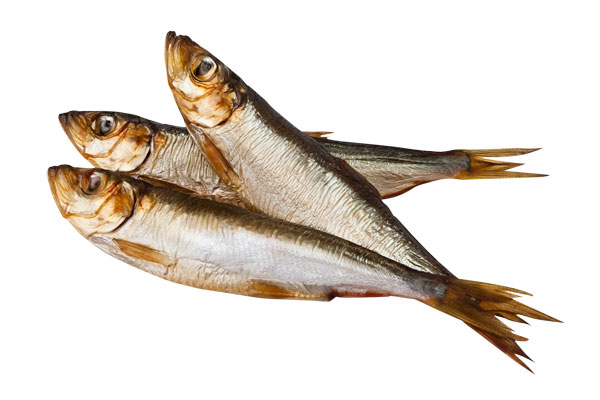Omega-3, 6 and 9: what do they mean?

WHAT EXACTLY ARE OMEGA 3, 6 AND 9?
The omegas are a group of long-chain polyunsaturated fatty acids essential to health. Unlike other nutrients, they can't be synthesised by the body and therefore must be obtained from the diet.
Strictly speaking, there are two essential fatty acids: alpha linolenic acid (omega-3) and linolenic acid (omega-6). Omega-9 is not classed as essential, since it can be synthesised by the body from other fats.
Within the omega-3 family, the long-chain eicosapentaenoic acid (EPA) and docosahexaenoic acid (DHA) are the most potent. Although the body can make these from the shorter-chain omega-3, it does so with very poor efficiency. Therefore, the best way to obtain these compounds is by eating oily fish.
WHY ARE THESE FATS IMPORTANT?
Omega-3 and 6 are involved in a number of processes in the body, including the activation of ‘locally acting hormones' known as eicosanoids, which control inflammation and immunity. They're also vital for the structure and fluidity of cell membranes.
In addition, Omega 3 is essential for growth, development, vision and the correct functioning of the brain and nervous system, with depletion associated with learning deficits. More recently, omega-3 has been linked with protection against depression, high blood pressure, heart disease, cancer, obesity and inflammation.
WHY DOES THE BALANCE MATTER?
Get The Leadout Newsletter
The latest race content, interviews, features, reviews and expert buying guides, direct to your inbox!
Both omega-3 and 6 are converted by the body into hormone-like eicosanoids but, because they compete for the same pathway, the ratio in the diet determines how many omega-3 and omega-6-derived eicosanoids are made.
This is where the potential problem lies. Whereas omega-6 eicosanoids are very potent and promote inflammation, omega-3 eicosanoids are less inflammatory, even anti-inflammatory.
Excessive levels of omega-6 (or a deficiency of omega-3) can therefore lead to a pro-inflammatory state, which has been linked to a number of conditions including cardiovascular disease, arthritis, stroke and cancer.
Although studies suggest that we evolved eating diets with a ratio of omega-6 to 3 of 1:1, the ratio in Western diets is more like 10:1 or even as much as 20:1, due to an increase in processed foods and a reliance on cereal products.
In short, a lower ratio of omega-6 to 3 is beneficial, and is thought to decrease the risk of a number of health conditions.
HOW MUCH DO WE NEED?
Recommended intakes are still up for debate, but because omega-6 is abundant in Western diets, getting enough isn't a problem. In fact, most of us get more than we need. Sources include most vegetables oils, cereal grains, nuts and seeds.
Recommended intakes of omega-3 vary, but in the UK, the government recommends 450-900mg of the long-chain EPA and DHA per day, which can be met with two portions of oily fish per week.
Shorter-chain omega-3 is also found in flaxseed and walnuts, although in this form the conversion to EPA and DHA is slow if the diet is high in omega-6.
HOW CAN I GET THE BALANCE RIGHT?
To help redress the balance, limit or exclude processed and deep-fried foods, and minimise use of vegetable oils such as corn and sunflower oils. Alternatives include olive, macadamia, avocado and coconut.
Aim for two portions of oily fish per week, include omega-3-enriched eggs, or try a fish oil supplement - up to 3g a day is considered safe, but consult your doctor if you're taking blood-thinning or cholesterol-lowering drugs.
Studies have also suggested that animal products from grass-fed animals is richer in omega-3 than are those from grain-fed animals, so buying free-range or grass-fed animal products may be beneficial.
| The government recommends 450mg -900mg of the long-chain EPA and DFA per day | A lower ratio of Omega-6: Omega-3 is beneficial | The ratio in Western diets is close to 10:1 We evolved on a ratio of 1:1 |
This article was first published in the Winter 2012 issue of Cycling Fitness. You can also read our magazines on Zinio, Google Play, Nook or download from the Apple store and also through Kindle Fire.

Thank you for reading 20 articles this month* Join now for unlimited access
Enjoy your first month for just £1 / $1 / €1
*Read 5 free articles per month without a subscription

Join now for unlimited access
Try first month for just £1 / $1 / €1
Founded in 1891, Cycling Weekly and its team of expert journalists brings cyclists in-depth reviews, extensive coverage of both professional and domestic racing, as well as fitness advice and 'brew a cuppa and put your feet up' features. Cycling Weekly serves its audience across a range of platforms, from good old-fashioned print to online journalism, and video.
-
 Full Tour of Britain Women route announced, taking place from North Yorkshire to Glasgow
Full Tour of Britain Women route announced, taking place from North Yorkshire to GlasgowBritish Cycling's Women's WorldTour four-stage race will take place in northern England and Scotland
By Tom Thewlis
-
 Positive signs for UK bike industry as Halfords cycling sales grow
Positive signs for UK bike industry as Halfords cycling sales growRetailer admits that the impact of Donald Trump's tariffs remains to be seen
By Tom Thewlis